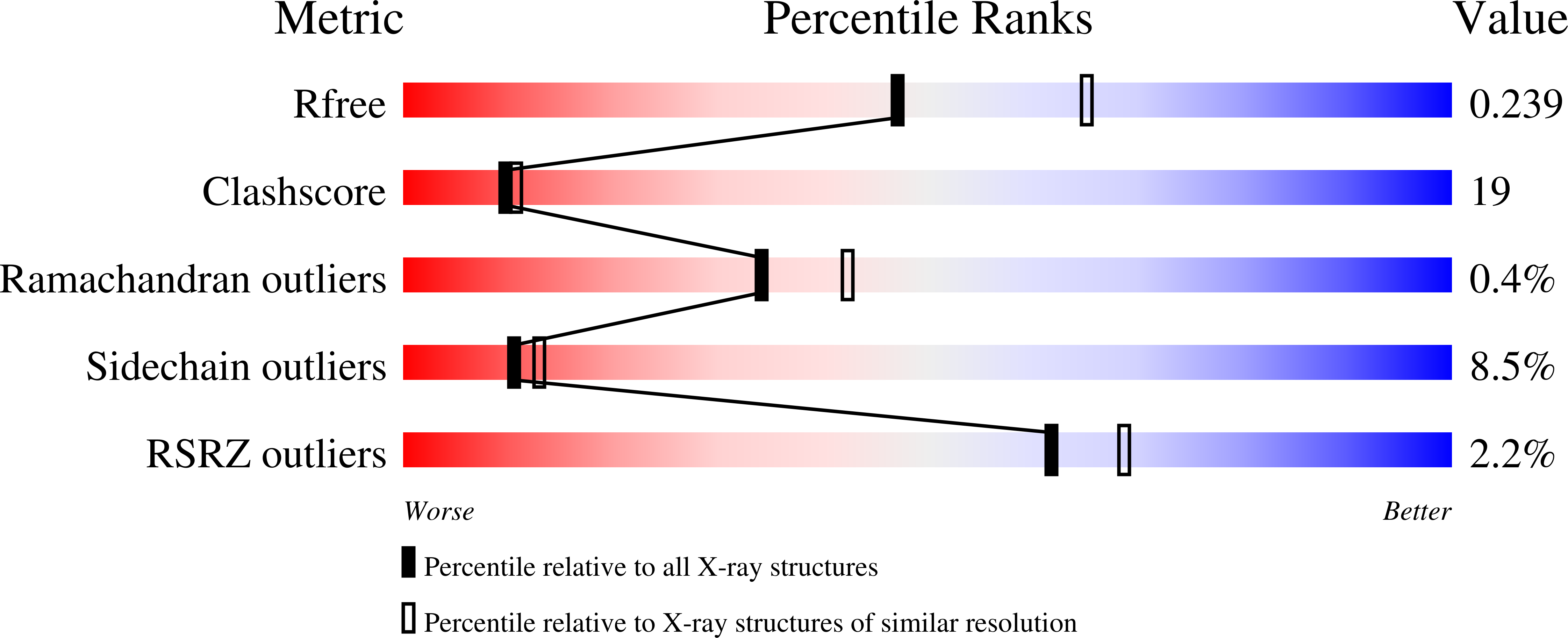The nucleotide-dependent interaction of FlaH and FlaI is essential for assembly and function of the archaellum motor.
Chaudhury, P., Neiner, T., D'Imprima, E., Banerjee, A., Reindl, S., Ghosh, A., Arvai, A.S., Mills, D.J., van der Does, C., Tainer, J.A., Vonck, J., Albers, S.V.(2016) Mol Microbiol 99: 674-685
- PubMed: 26508112
- DOI: https://doi.org/10.1111/mmi.13260
- Primary Citation of Related Structures:
4YDS - PubMed Abstract:
The motor of the membrane-anchored archaeal motility structure, the archaellum, contains FlaX, FlaI and FlaH. FlaX forms a 30 nm ring structure that acts as a scaffold protein and was shown to interact with the bifunctional ATPase FlaI and FlaH. However, the structure and function of FlaH has been enigmatic. Here we present structural and functional analyses of isolated FlaH and archaellum motor subcomplexes. The FlaH crystal structure reveals a RecA/Rad51 family fold with an ATP bound on a conserved and exposed surface, which presumably forms an oligomerization interface. FlaH does not hydrolyze ATP in vitro, but ATP binding to FlaH is essential for its interaction with FlaI and for archaellum assembly. FlaH interacts with the C-terminus of FlaX, which was earlier shown to be essential for FlaX ring formation and to mediate interaction with FlaI. Electron microscopy reveals that FlaH assembles as a second ring inside the FlaX ring in vitro. Collectively these data reveal central structural mechanisms for FlaH interactions in mediating archaellar assembly: FlaH binding within the FlaX ring and nucleotide-regulated FlaH binding to FlaI form the archaellar basal body core.
Organizational Affiliation:
Molecular Biology of Archaea, University of Freiburg, Institute of Biology II, Schaenzlestr.1, 79104, Freiburg, Germany.
















